What Is a Memoir and How to Write an Outstanding One?
No matter who or where we are in life, we all have a story to tell. Whether it’s a happy memory or a tragic turning point, these stories can affect many people. And that’s what memoirs are all about.
But the craft of memoir writing isn’t like any other; even though it is considered a work of non-fiction, it contains some elements of fiction that keeps the reader wanting to know more. So let’s explore how to write a memoir and turn it into a best seller (even if you aren’t a celebrity).

What Is a Memoir?
The word “memoir” itself means memory or remembrance. In the field of literature, a memoir is a collection of the events that happened in the author’s life, tied together by a certain theme.
A successful memoir is often dramatic yet relatable. It tries to teach the reader a lesson through the events of your story. And it usually brings out the readers’ emotions and resonates with them.
In other words, the memoir is as much about the readers as it is about the author. This is done by not only narrating the events in a matter-of-fact tone and style but by also adding human emotions and universal truth to it.
What Is the Difference Between a Memoir and an Autobiography?
An autobiography is a chronological account of all the events that took place throughout the author’s life. And although a memoir also narrates the events of one’s life, not everything that happened to the author is included.
Instead, the memoir is more focused on the parts of the author’s life that are related to the theme he chose for his memoir. These parts don’t have to be included in chronological order.
This means that you can narrate the events of your life in any sequence that serves your theme–and makes sense to the readers of course. For example, if you are writing about a loving relationship, you can start with your wedding day and then go back in time to a childhood memory that formed your personality and helped you become a better spouse.
Another thing that makes autobiographies different from memoirs is that the latter use elements of fiction and creative writing. These elements –which help enhance the reader’s experience– include dialogue, foreshadowing, irony, description, tension, and much more.
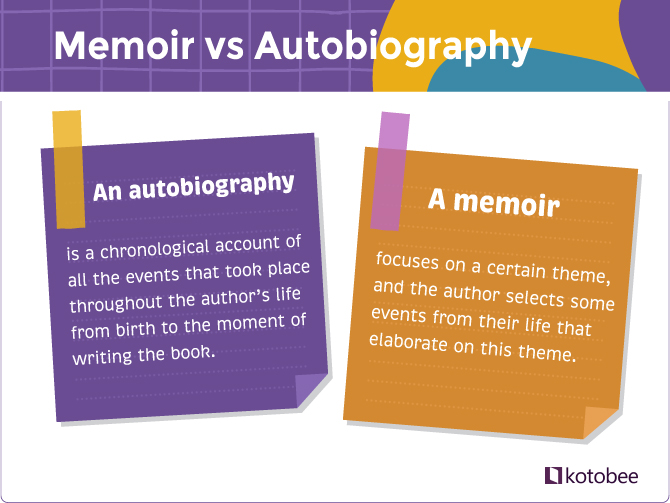
Who Can Write a Memoir?
If you believe that you have a story that your readers can relate to and resonate with, then go ahead and write your memoir. You don’t need to be a Nobel prize winner or a Hollywood star to put your life into words and share it with the world (or even just your close relations).
While the obvious reason behind writing a memoir is to share your story, there can be many others. For example, you can write your memoir to gain insight into your past, heal from a traumatic experience, preserve your family legacy, or help others overcome struggles similar to yours.

What Are the Different Types of Memoirs?
Not all memoirs are the same; even though we think memoirs are usually stories of personal transformation, there are many many different types. This gives you the freedom to choose the type that best suits your story.
Here are the most famous types of memoirs:
1. Personal Transformation
This is the most common type of memoir, in which the author tells the story of how they turned their life around, from the pit of despair to the lights of glory. Its focus could be childhood memories, illness, or a certain relationship.
2. Travel or Adventure
As the name suggests, this type of memoir focuses on the lessons learned through a certain adventure or trip. Whether it is climbing Mount Everest, going to the North Pole, or camping in the forest for months, you have to share with your readers not only the little details of your trip but also how these details impacted you.
3. Professional Highlights
Focusing on one’s professional life can also be the topic of one’s memoir, especially if this career has various challenges or one that is under the spotlight. If you are a basketball player, for example, and you won some prestigious medals, then you might want to share your experience with your readers.
4. Spiritual Quest
Going through a journey of self-discovery and finding one’s purpose in life makes for a great memoir. Spiritual quests like these could be either about religious values or just chasing the idea of faith and peace in general.
5. Portrait memoirs
This type of memoir is quite different from the rest; even though it is written in first-person voice, it is not about the author. Instead, it is about someone the author is close to or who plays an important role in their life.
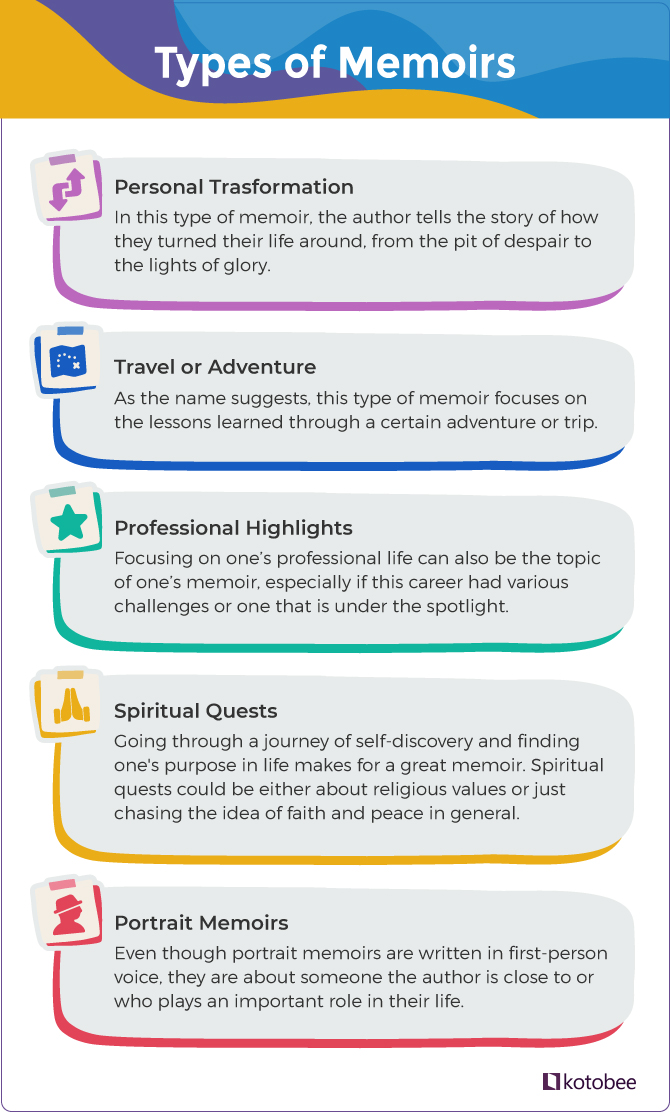
What Is the Average Word Count of Memoirs?
Just like novels, the average word count of memoirs is between 60,000 to 80,000 words. If your memoir is way shorter than that, you may not have enough story that excites the reader. And if it is longer, then the pace might be too slow that it leaves the reader bored and uninterested.
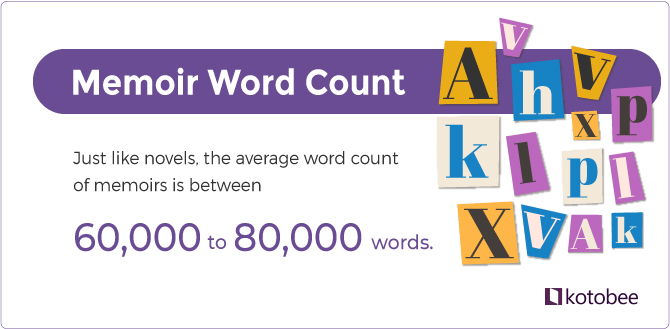
How to Write a Memoir
Now let’s look at the technicalities that turn one’s story into a best-seller memoir. Here are the elements you need to keep in mind while crafting your life memoir:
1. Select Your Theme
A memoir is mainly a theme-oriented narrative with events from your life that serves this theme. For example, a personal memoir can focus on struggling with a certain illness or navigating different relationships.
The theme you select should convey to your readers that they aren’t alone in whatever they are going through; it has to touch on their needs and fears, as you show them how you managed to turn your life around.
Even though it is true that not every reader has the same experiences as you, if you choose your theme correctly and manage to present it in an engaging manner, your memoir will definitely resonate with them.
2. Draft an Outline
Any book needs an outline, and that’s true for memoirs as well. So after settling on a theme, decide which events you’ll narrate in your memoir to highlight this theme and them to your outline.
Keep your outline to one page and remember that you don’t have to narrate things chronologically. You can always use your present-day voice to connect events together in a way that makes sense to the reader.
One recommended way to structure your memoir is to present difficulties you have been through upfront to keep your readers hooked, wanting to know how you made your way out. Don’t give them the backstory right away, but let it unfold as the story progresses.
3. Use Creative Writing
As we mentioned earlier, memoirs use elements from fiction and apply various creative writing techniques. These techniques are used to keep the readers interested and bring out their emotions as they make them more invested in your story.
Here are some fictional elements you should keep in mind while writing your memoir:
- Character Development: Most memoirs are stories of transformation. You want to show the readers how the main character (which is you in this case) has overcome struggles and fulfilled their potential. When done right, the difference between who you used to be and who you are now becomes apparent.
- Plot: Any great story needs some tension, or what is called in literary terms a climax and a resolution. If everything is always bright and shining throughout your memoir, your reader might not find a reason to keep reading. Same thing if it is all dark and dramatic. You need to keep your readers engaged by presenting various setups and payoffs throughout the book.
- Setting: The setting is where things take place, and sometimes it becomes as important as the characters. So make sure you give a sense of not only what this setting looks like, but what it also feels like and how it impacted you.
- Point of view: Naturally, a memoir is all about you, with a first-person point of view. This, however, doesn’t mean that you can’t include others’ perspectives. You can present other sides of the story by conducting interviews with family and friends, or by sharing photographs and relevant documentation.
4. Show; Do Not Tell
Just like in novels, it will do you no good to just state the events you want to highlight in your memoir. Instead, you have to know how to narrate these events in a way that makes your readers feel everything you have been through.
Here is an example of telling vs showing. Let’s say you had a teacher whom you couldn’t stand as he had a loud voice and punished the students for no reason. Instead of just saying that you had a terrible second-grade teacher who used to punish all his students, you can show the reader how it felt when this teacher was around.
The class fell suddenly silent as we heard Mr. Tom’s steps approaching the door. Each one of us sat quietly in their place before he even entered, and you could literally hear a pin drop. But you won’t attempt to drop anything in Mr. Tom’s class, if you were wise, or else you’ll get a taste of his unmerciful stick on your hand.
5. Keep It Anonymous
Now for the sake of avoiding any legal consequences, you should avoid mentioning anyone who doesn’t wish to be mentioned, whether poorly or not. Also changing the names alone might still expose someone who prefers to stay unknown to your readers. So what you can do is change the names as well as the events.
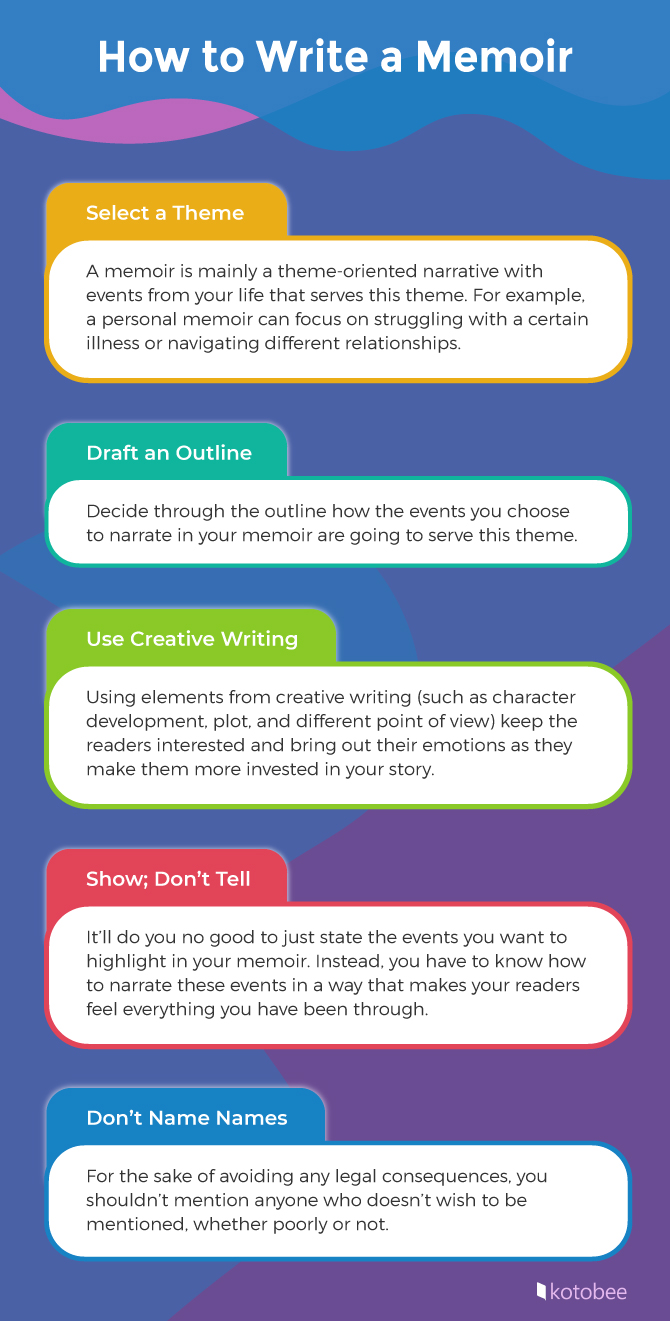
How to Make Your Memoir Stand Out
While the above-mentioned memoir writing steps will help you create a great memoir, there are a few things that you can add to your memoir that will take it to the next level. If you’re planning on creating a digital version of your memoir, here are the things you should consider:
Videos, Audio Files, and Photo Galleries
Since memoirs are quite personal, embedding videos inside your book will help bring your story to life. It can be a home video of your first day in kindergarten or snaps of your wedding day in a photo gallery. Or you can simply record some audio files narrating parts of your story and add them to your ebook. This will help build an emotional connection to your readers and get your point through.
Mini Apps
Using Kotobee Author, you can make your memoir interactive by adding ebook apps. For example, you can add soundscapes for your readers to enjoy while going through your story.
You can also use the Google Maps mini-app to add more depth to your travel or adventure memoir by showing your readers the places you mention directly on the map. And if you use different languages in your writing, you can use the Google Translate mini-app to make things easier for your readers.
All you have to do is head to Kotobee’s website and start exploring the many different ways these mini-apps can elevate the reading experience for your audience.
External Links and References
Adding links and lists of references to your memoir will help give it some authenticity. It will also create a more in-depth experience for the readers. Moreover, it’ll help you in getting your point across without having to include irrelevant information.
What Are Some Examples of Great Memoirs?
Now let’s look at some memoirs that will inspire and teach you how to narrate your story in a way that keeps your readers wanting to know more.
Educated by Tara Westover
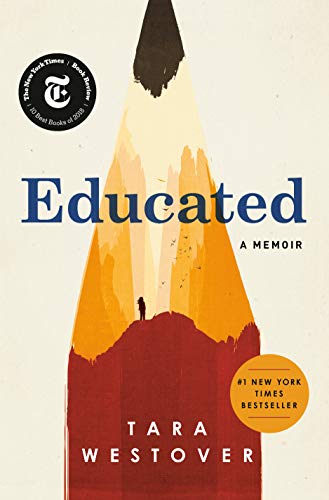
This personal memoir illustrates how to narrate the obstacles one faces in life and shows the story of transformation and triumph. In this book, Tara Westover goes over the details of her isolated childhood and how she went from having no education at all till she was seventeen to earning a Ph.D.
Tuesdays with Morrie
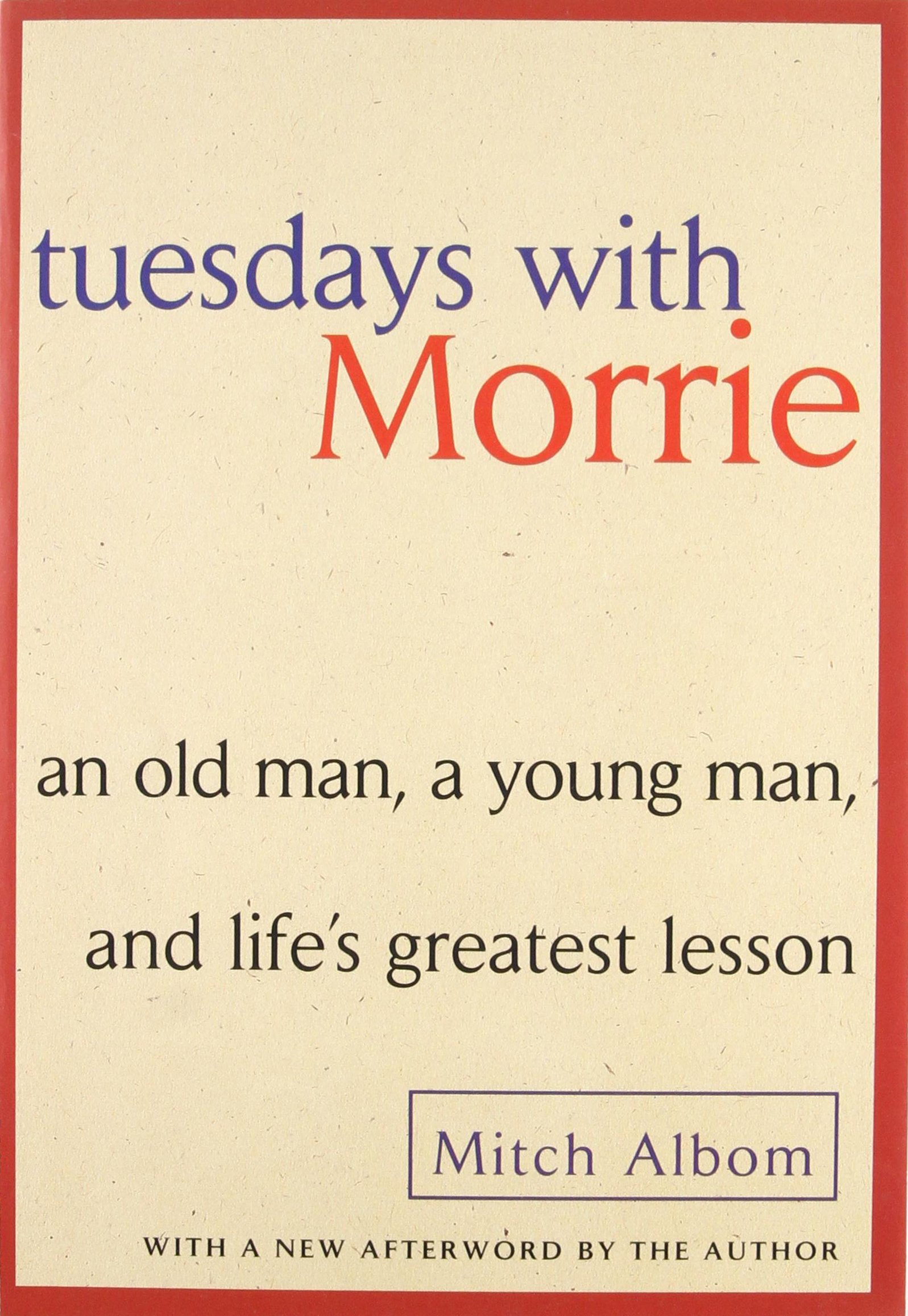
This international bestseller is an excellent example of a portrait memoir. Even though the memoir is written by Mitch Albom, it focuses on the life of his college professor Morrie Schwartz, how he deals with his paralyzing illness, and how he faces death.
My Years with General Motors
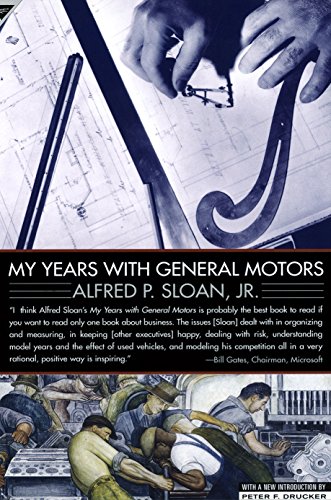
One of the major business classics, this book can be considered a professional memoir. Offering management and leadership lessons in addition to a personal glimpse into the industry, Alfred Salon shares in this book his experience in one of the top automobile companies.
Eat Pray Love
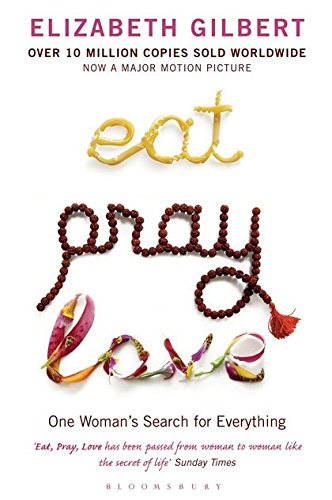
Elizabeth Gilbert did a great job documenting her travels across the world as well as her inner journey and quest to find happiness after a broken marriage. This makes it a great example of travel and spiritual memoirs. She does so by taking the reader back and forth in both time and place, as she explores her surroundings as well as her inner thoughts and feelings.
What Are the Best Memoir Writing Services?
You might have a great story that you believe should be shared with the public but are just not sure if you want to write it yourself. If this is the case, then you might like to join a memoir writing course or consider hiring a memoir writing service.
Here are some writing services that will help get your story published:

Final Thoughts
Your story is worth telling, and knowing how to tell it in an interesting and engaging way will help you share it with a lot of people. Following the memoir writing tips mentioned in this article will help turn your book into a bestseller, and make your readers feel both moved and enlightened by the narrative you share.
.
Read More
How to Write Dialogue in a Book
Making Use of Humor in Writing: Why and How
Writing Secrets of Best Selling Female Authors
















Jo Bushner
January 26, 2024Thank you for the help.
Kotobee
January 28, 2024Hi Jo!
We are glad you found this article helpful 🙂
Osas Usideme
June 3, 2024I am so glad I came across this article. I have been struggling to clarify my writing as to what it should be. Thanks for the illustrations.
Kotobee
June 10, 2024Hi Osas!
Thank you for your kind words! We are glad you find our content helpful. 🙂
Katherine Clements
May 20, 2025such a great blog you have shared. you have explained all the important things. thanks for your kind words, your blog is very helpful for beginners.
Jacqui
August 15, 2025I’m genuinely inspired by this post, what a beautifully human take on memoir writing! Framing a memoir as a memory woven around a central theme rather than a life checklist really makes the craft feel accessible and deeply meaningful. The distinction between memoirs and autobiographies, especially the freedom to weave time non-chronologically, and the emphasis on “showing, not telling,” breathe emotion into storytelling. With practical tips on tone, structure, and even multimedia touches, this guide feels like a personal coach for every aspiring writer.
Kotobee
November 19, 2025Thanks a lot for your kind words 🙂
Daniel
November 13, 2025What a beautifully clear and generously helpful guide—thank you! I really appreciated how you began by defining a memoir as a collection of events from the author’s life, tied together by a certain theme. Your breakdown of the differences between a memoir and an autobiography—especially noting that memoirs don’t have to cover everything chronologically, and can use creative‑writing tools like dialogue, tension and flashbacks—was both crisp and immediately usable. The section on Who Can Write a Memoir? was particularly encouraging—reminding us that you don’t have to be a celebrity or world‑changer to have a story worth telling.
Kotobee
November 19, 2025Thanks a lot Daniel!